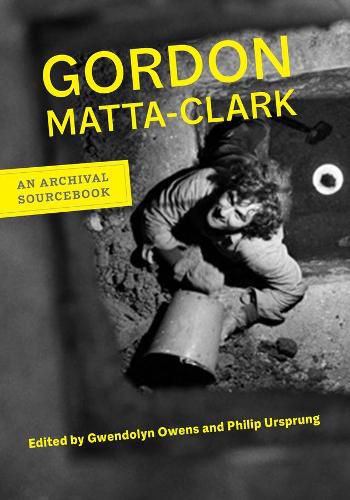Readings Newsletter
Become a Readings Member to make your shopping experience even easier.
Sign in or sign up for free!
You’re not far away from qualifying for FREE standard shipping within Australia
You’ve qualified for FREE standard shipping within Australia
The cart is loading…






An essential reference that provides new understanding of the thought processes of one of the most radical artists of the late twentieth century.
Gordon Matta-Clark (1943-1978) has never been an easy artist to categorize or to explain. Although trained as an architect, he has been described as a sculptor, a photographer, an organizer of performances, and a writer of manifestos, but he is best known for un-building abandoned structures. In the brief span of his career, from 1968 to his early death in 1978, he created an oeuvre that has made him an enduring cult figure.
In 2002, when Gordon Matta-Clark’s widow, Jane Crawford, put his archive on deposit at the Canadian Centre for Architecture in Montreal, it revealed a new voice in the ongoing discussion of artist/architect Matta-Clark’s work: his own. Gwendolyn Owens and Philip Ursprung’s careful selection and ordering of letters, interviews, statements, and the now-famous art cards from the CCA as well as other sources deepens our understanding of one of the most original thinkers of his generation. Gordon Matta-Clark: An Archival Sourcebook creates a multidimensional portrait that provides an opportunity for readers to explore and enjoy the complexity and contradiction that was Gordon Matta-Clark.
$9.00 standard shipping within Australia
FREE standard shipping within Australia for orders over $100.00
Express & International shipping calculated at checkout
An essential reference that provides new understanding of the thought processes of one of the most radical artists of the late twentieth century.
Gordon Matta-Clark (1943-1978) has never been an easy artist to categorize or to explain. Although trained as an architect, he has been described as a sculptor, a photographer, an organizer of performances, and a writer of manifestos, but he is best known for un-building abandoned structures. In the brief span of his career, from 1968 to his early death in 1978, he created an oeuvre that has made him an enduring cult figure.
In 2002, when Gordon Matta-Clark’s widow, Jane Crawford, put his archive on deposit at the Canadian Centre for Architecture in Montreal, it revealed a new voice in the ongoing discussion of artist/architect Matta-Clark’s work: his own. Gwendolyn Owens and Philip Ursprung’s careful selection and ordering of letters, interviews, statements, and the now-famous art cards from the CCA as well as other sources deepens our understanding of one of the most original thinkers of his generation. Gordon Matta-Clark: An Archival Sourcebook creates a multidimensional portrait that provides an opportunity for readers to explore and enjoy the complexity and contradiction that was Gordon Matta-Clark.